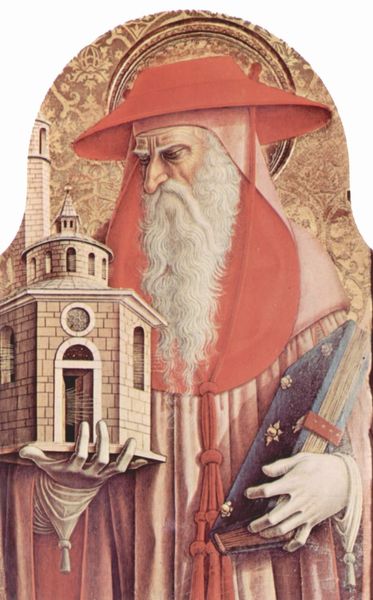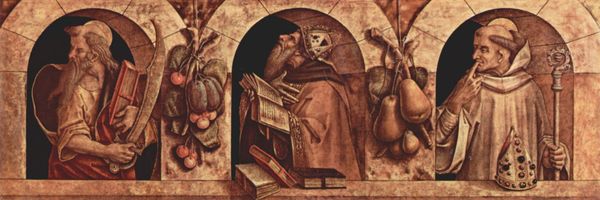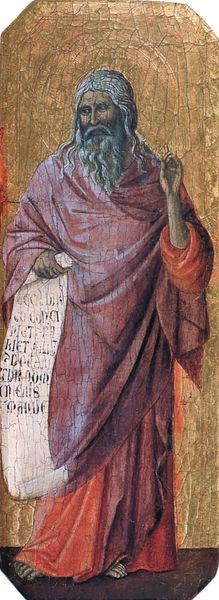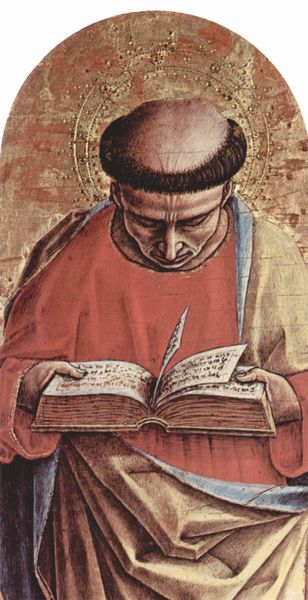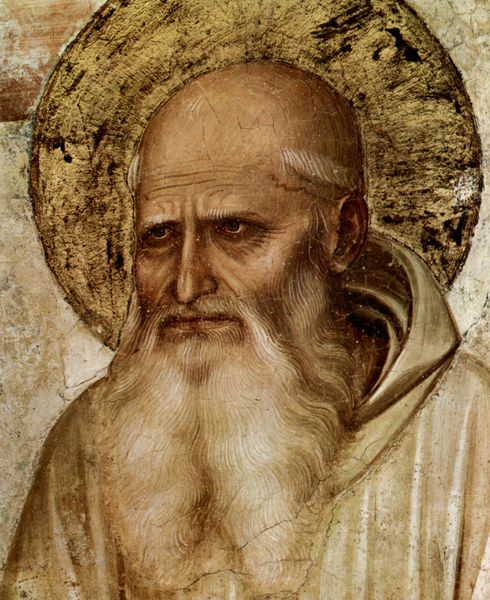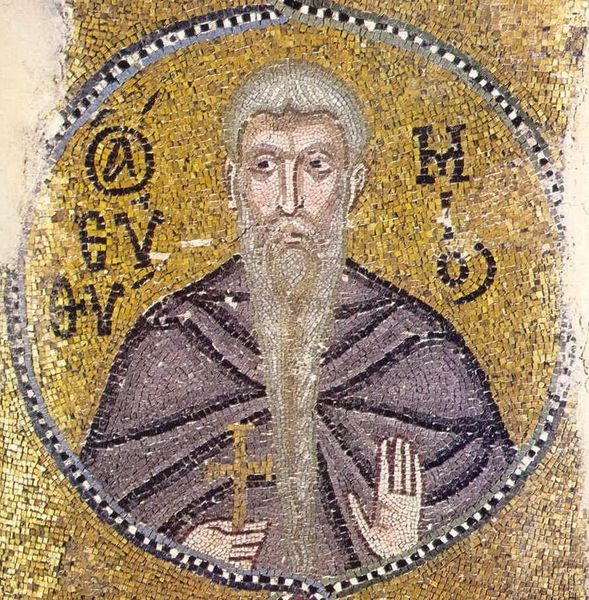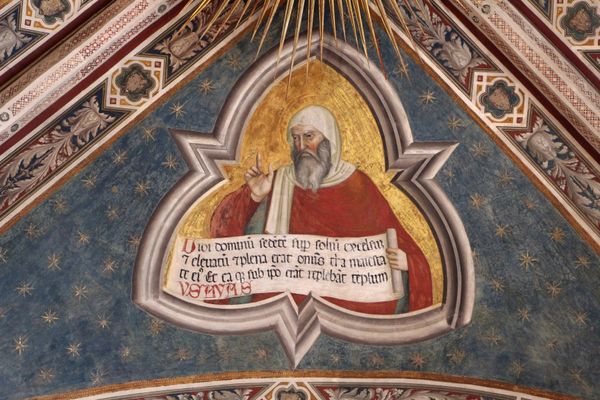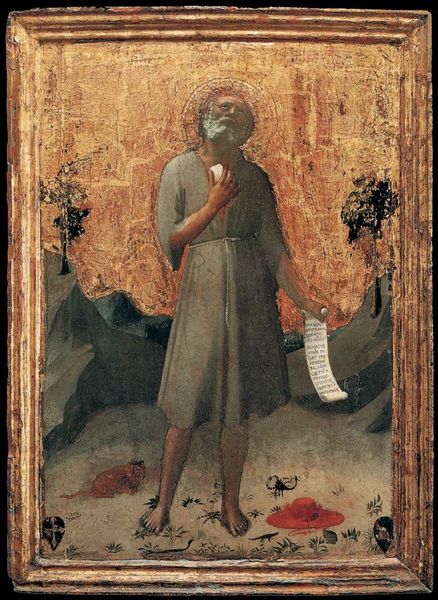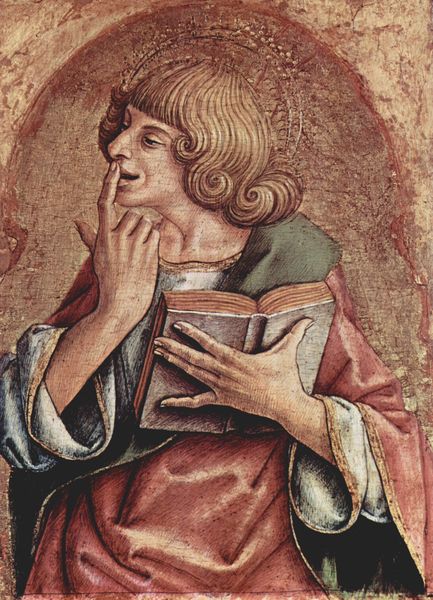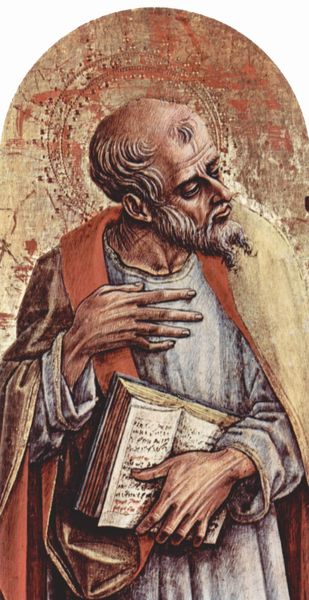
tempera, painting, oil-paint
#
portrait
#
tempera
#
painting
#
oil-paint
#
figuration
#
oil painting
#
christianity
#
history-painting
#
italian-renaissance
Dimensions: 62 x 25 cm
Copyright: Public domain
Editor: So, this is Carlo Crivelli's "Saint Anthony, Saint Jerome, Saint Andrew," painted around 1482 using tempera and oil on wood. There's such a sternness in their faces, but also an undeniable regality in their stance. What strikes me is the contrast between the overt religious symbolism and the very real, almost confrontational expressions of the saints. What do you see in this piece? Curator: I see a powerful statement on faith, particularly its intersection with societal power structures of the time. Consider the historical context: the late 15th century was a period of immense social upheaval and political maneuvering within the church. These saints, although holy figures, are presented with such unyielding resolve, almost as if they’re challenging the viewer. How do you interpret their gaze in relation to the societal role of the Church? Editor: I hadn't thought of it that way. It’s almost as if they’re daring you to question their authority. The inclusion of their attributes – the T-shaped staff, the church, and the cross – emphasizes their roles but does the setting, against a solid gold backdrop, flatten the figures? Are they simply symbols *of* power, instead of questioning it? Curator: The gold backdrop itself has symbolic weight. Gold signifies divinity, yes, but it also signifies wealth and, by extension, the opulence of the Church. Perhaps Crivelli is highlighting the inherent tension between spiritual purity and earthly power. How do these visual choices affect the viewer's understanding of the Church's influence on daily life? Editor: That’s a fascinating perspective! Thinking about the power dynamics in the Church then and even today, framing them within gilded spaces makes their messages feel incredibly complex and very intentional. It makes you really think about the implications of their symbols. Curator: Precisely. By placing these austere figures against such a lavish background, Crivelli provokes us to question not just the faith of these individuals, but the institution they represent. It also shows how visual choices make all the difference for impacting an artwork's meaning. Editor: Absolutely, the social context combined with his formal choices created some fascinating tensions.
Comments
No comments
Be the first to comment and join the conversation on the ultimate creative platform.

